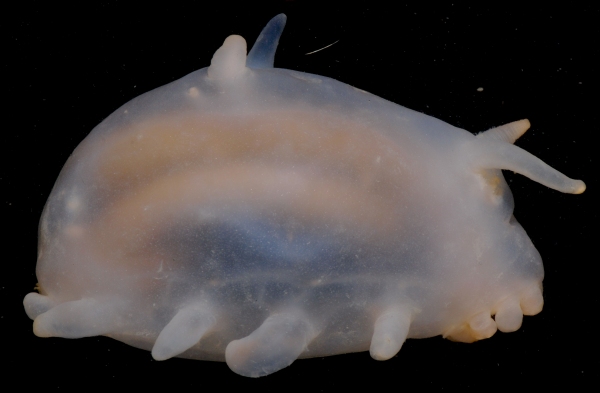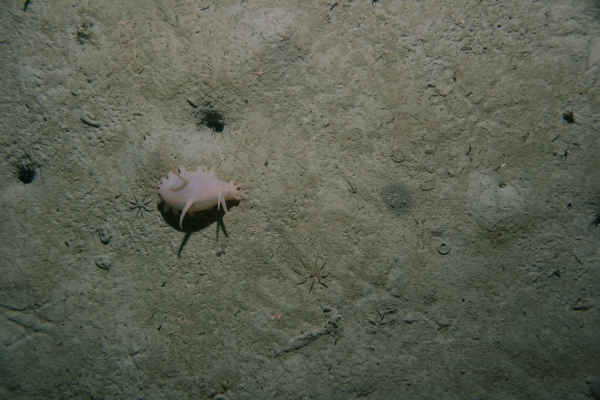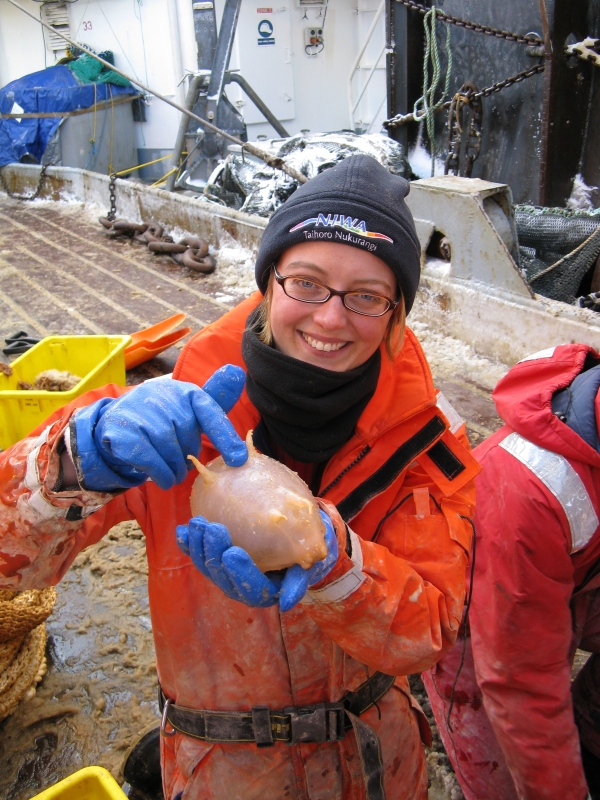The Antarctic ‘sea pig’ (Protelpidia murrayi) is a type of sea cucumber that can be found roaming the muddy seafloor in the Ross Sea. This was one of the very first critters we featured (Week no. 2). Since this is one of our favourites and many of our newer friends might not have seen the post, we decided to showcase it again.
Our sea pig images caught the attention of Ze Frank who posts some hilarious and informational videos on the world’s amazing and weird creatures in his “True Facts…” series on YouTube. This is what Ze Frank made of the sea pig and with over 5 million views it has been well received! Make sure you watch it all the way through and spot our very own Sadie Mills at the very end.
Protelpidia murrayi belongs to the group of sea cucumbers that have managed to establish themselves in the deepest parts of the world’s oceans, the abyss, but this species makes its home on the deep continental shelf around the Antarctic (~400-900 metres deep).
Find out more about sea pigs on the echinoblog written by our friend Dr. Chris Mah, and the amazing parasites that the sea pig hosts from our earlier Critter of the Week post.
This is a specimen of Protelpidia murrayi that we collected in the Ross Sea in 2008. Sea cucumbers are simple organisms, imagine a water balloon filled with some intestines and reproductive organs (you can see the coiled gut through the transparent skin here). If you squint a little and roll your head from side to side you can definitely see where the sea pig got its name from.
This sea pig is marching around the muddy seafloor on its hydrostatic ‘feet’ at around 660 m deep on the Ross Sea shelf. The two red laser marks are exactly 20cm apart and help us measure what we see on the ocean floor. Also spot the sea spiders and the little brittle star in this seafloor photo from our deep towed camera system.
The sea pig uses a ring of tentacles around the mouth to pick up and eat detritus from the muddy seafloor.



